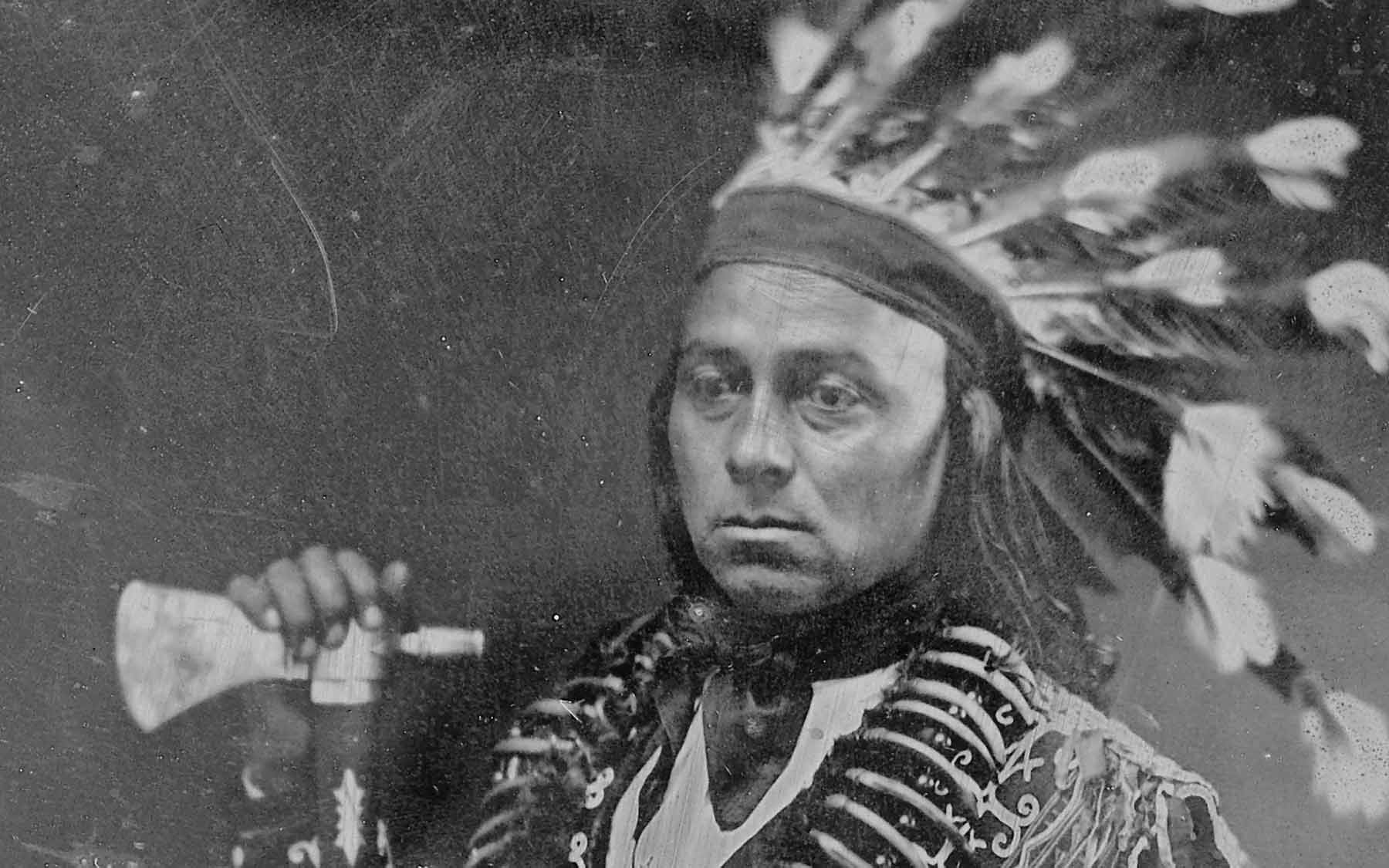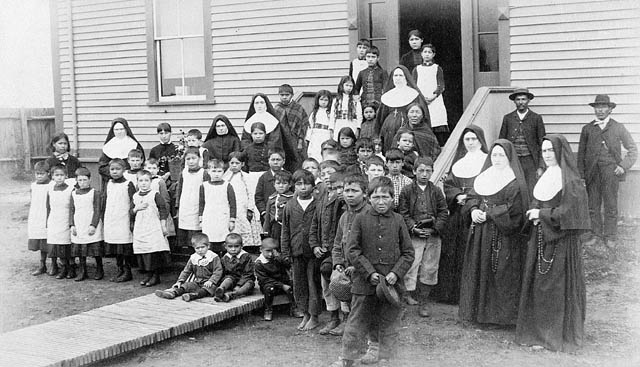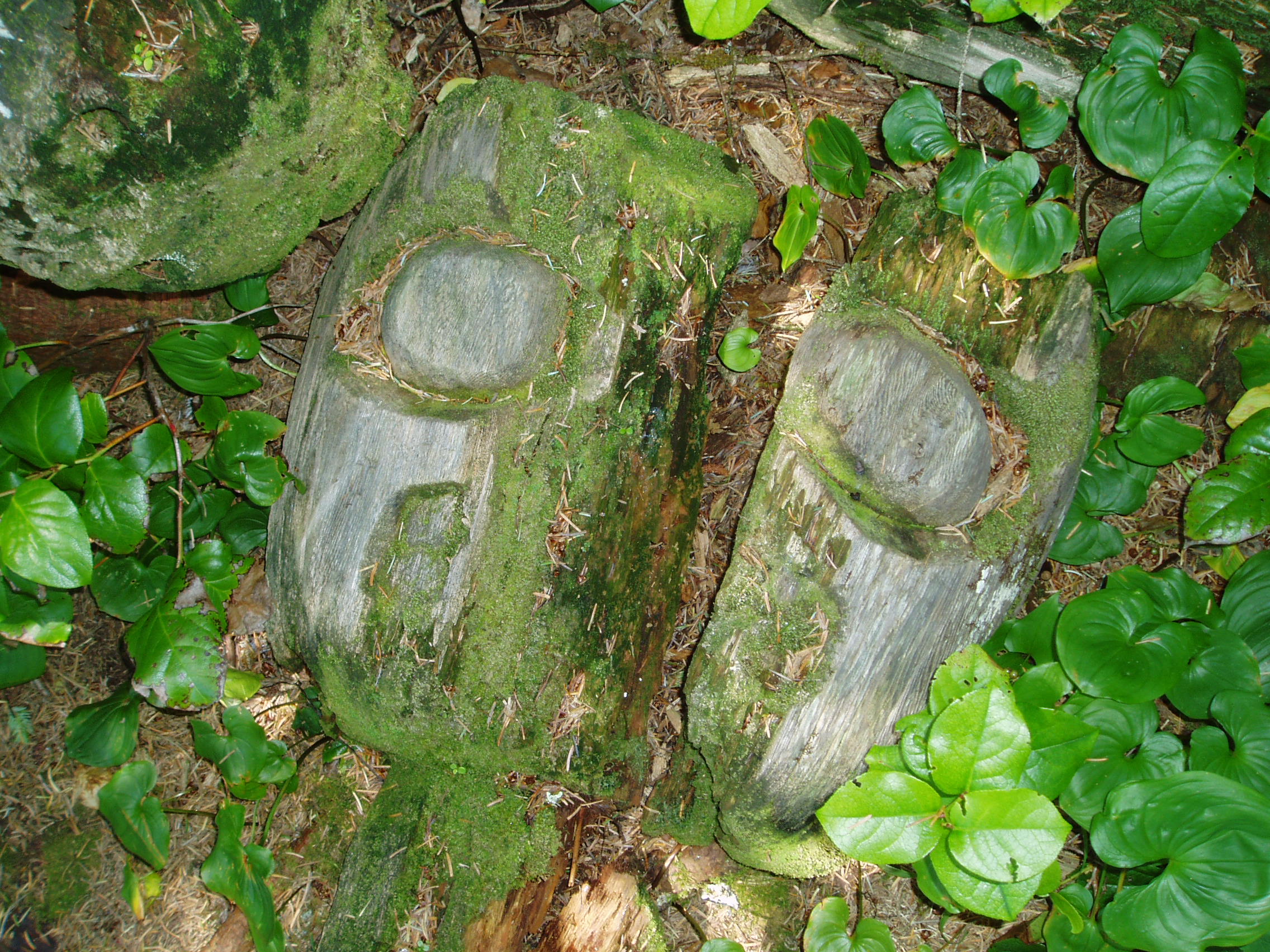Browse "People"
-
Article
Chiac
Chiac (also spelled chiak or chiaque) is a specific type of discursive switching between French and English among individuals who are highly bilingual and have Acadian French as their mother tongue but Canadian English as their first or second language.
"https://d2ttikhf7xbzbs.cloudfront.net/media/media/051052d9-c140-4d7a-9768-aa1d64cedeb3.jpg" // resources/views/front/categories/view.blade.php
https://d2ttikhf7xbzbs.cloudfront.net/media/media/051052d9-c140-4d7a-9768-aa1d64cedeb3.jpg
-
Article
Chicho Valle
Chicho (Amador) Valle. Bandleader, singer, guitarist, b Cienfuegos, Cuba, 2 Jul 1922 or 1924, naturalized Canadian 1961, d Toronto 14 Oct 1984.
"https://development.thecanadianencyclopedia.ca/images/tce_placeholder.jpg?v=e9dca980c9bdb3aa11e832e7ea94f5d9" // resources/views/front/categories/view.blade.php
https://development.thecanadianencyclopedia.ca/images/tce_placeholder.jpg?v=e9dca980c9bdb3aa11e832e7ea94f5d9
-
Article
Kyuquot and Checleseht First Nations
The Kyuquot (Ka:’yu:’k’t’h’) and Checleseht (Chek’tles7et’h’) First Nations make up the northernmost Nuu-chah-nulth communities on the west coast of Vancouver Island, British Columbia. Once separate bands, the Kyuquot and Checleseht officially amalgamated in 1962. Both are currently self-governing nations under the Maa-nulth Treaty.
"https://d2ttikhf7xbzbs.cloudfront.net/media/media/7341256a-7b45-4fcd-b945-4b606038ef74.JPG" // resources/views/front/categories/view.blade.php
https://d2ttikhf7xbzbs.cloudfront.net/media/media/7341256a-7b45-4fcd-b945-4b606038ef74.JPG -
Article
Chief
Chief is a word used to denote status or leadership upon an individual in a group, clan or family. The origin of the word is European; colonists used it to refer to the leaders of Indigenous nations during the era of contact. While different Indigenous nations have their own terms for chief, the English version of the word is still used widely to describe leaders tasked with promoting cultural and political autonomy. The term is also used by institutions and organizations that are not exclusively Indigenous to refer to heads of staff (e.g., chief of police, commander-in-chief, chief executive officer). This article explores the historical and contemporary uses of the term in the Indigenous context.
"https://d2ttikhf7xbzbs.cloudfront.net/media/media/523486d8-e1c9-46a3-bfce-7ffa41907512.jpg" // resources/views/front/categories/view.blade.php
https://d2ttikhf7xbzbs.cloudfront.net/media/media/523486d8-e1c9-46a3-bfce-7ffa41907512.jpg
-
Article
Tsilhqot'in (Chilcotin)
The Tsilhqot'in (Chilcotin) are an Indigenous people who live between the Fraser River and the Coast Mountains in west-central British Columbia. Traditionally Dene (Athabascan) speaking, their name means "people of the red river" and also refers to the Chilcotin Plateau region in British Columbia. The Tsilhqot’in National Government is a tribal council established in 1989 that represents the six member First Nations of the Chilcotin Plateau. In 2014, the Tsilhqot’in people won a Supreme Court of Canada case that focused on the issue of Aboriginal title. In 2018, Prime Minister Justin Trudeau formally apologized to the Tsilhqot’in people for the wrongful conviction and hanging of Tsilhqot’in chiefs during the Chilcotin War of 1864.
"https://d2ttikhf7xbzbs.cloudfront.net/media/media/1209caa7-baef-416b-85cf-5a9975513dd9.jpg" // resources/views/front/categories/view.blade.php
https://d2ttikhf7xbzbs.cloudfront.net/media/media/1209caa7-baef-416b-85cf-5a9975513dd9.jpg
-
Article
Child Migration to Canada
Migration is a unique experience for a child and Canada receives child migrants from all over the world. Some children come as unaccompanied minors and claim refugee status, some come alone and wait to be reunited with their families, while others are international adoptees by Canadian families.
"https://d2ttikhf7xbzbs.cloudfront.net/media/media/55e0c503-e9cf-4fb3-852d-7776eb9d9871.jpg" // resources/views/front/categories/view.blade.php
https://d2ttikhf7xbzbs.cloudfront.net/media/media/55e0c503-e9cf-4fb3-852d-7776eb9d9871.jpg
-
Article
Children, Education and the Law
In Canada, political and law-making power is shared by the provincial and federal levels of government, as set out in the constitution. Section 93 of the Constitution Act, 1867 gives the provincial governments the exclusive jurisdiction to make laws governing education.
"https://d2ttikhf7xbzbs.cloudfront.net/media/media/8b192352-63f2-4358-98bf-206f660e3b65.jpg" // resources/views/front/categories/view.blade.php
https://d2ttikhf7xbzbs.cloudfront.net/media/media/8b192352-63f2-4358-98bf-206f660e3b65.jpg
-
Article
Uprooted Lives: the British Home Children
On 24 February 2010, the Prime Minister of the United Kingdom, Gordon Brown, officially apologized for a program that the British government put in place in the 19th century to send large numbers of children as emigrants to various British colonies, including Canada. Media reports of this apology took many people in Britain and Canada by surprise. They had no idea that such an event had taken place in their two countries’ histories.
"https://d2ttikhf7xbzbs.cloudfront.net/media/media/4f582616-f9e4-4fad-880a-899d31608cab.jpg" // resources/views/front/categories/view.blade.php
https://d2ttikhf7xbzbs.cloudfront.net/media/media/4f582616-f9e4-4fad-880a-899d31608cab.jpg
-
Article
Children of Peace
The Children of Peace. A religious sect active in the area of Sharon (known as Hope until the 1860s but from the 1840s mainly as Sharon), south of Lake Simcoe, Ont, from the second to the ninth decade of the 19th century.
"https://development.thecanadianencyclopedia.ca/images/tce_placeholder.jpg?v=e9dca980c9bdb3aa11e832e7ea94f5d9" // resources/views/front/categories/view.blade.php
https://development.thecanadianencyclopedia.ca/images/tce_placeholder.jpg?v=e9dca980c9bdb3aa11e832e7ea94f5d9
-
Excerpt
Children of the Halifax Explosion
Among the approximately 2,000 victims who died in the Halifax Explosion of 1917, one-quarter were children under the age of 18. Many other young people survived but would carry physical and emotional scars with them for the remainder of their lives. Dead and wounded children were the most poignant victims of the disaster.
"https://d2ttikhf7xbzbs.cloudfront.net/media/media/a60d0cf9-b2c8-4223-a154-72ed9c6ef620.jpg" // resources/views/front/categories/view.blade.php
https://d2ttikhf7xbzbs.cloudfront.net/media/media/a60d0cf9-b2c8-4223-a154-72ed9c6ef620.jpg
-
List
Children’s Books about Inuit Culture in Canada
Inuit authors have brought the richness and diversity of Inuit culture into the public eye with several enchanting and powerful books. From oral histories to Arctic animals to supernatural creatures, the books on this list explore various elements of the Inuit culture and way of life. Titles listed are recommended for a range of age groups, from toddlers to preteens. These books support efforts to encourage literacy, preserve and promote culture, and educate others about Inuit and Indigenous peoples and history.
"https://d2ttikhf7xbzbs.cloudfront.net/media/media/57c0546b-1a73-45fd-91e9-70be8a64b321.jpg" // resources/views/front/categories/view.blade.php
https://d2ttikhf7xbzbs.cloudfront.net/media/media/57c0546b-1a73-45fd-91e9-70be8a64b321.jpg
-
List
Children’s Books About Residential Schools in Canada
Church-run schools for Indigenous children were created in Canada in the 1600s. In 1883, the Canadian government funded and helped establish more church-run schools. The goal was to assimilate Indigenous children into the dominant white, Christian society. By the time the last residential school closed in 1996, more than 150,000 First Nation, Métis and Inuit children had been forced to attend against their will and the wishes of their parents. Many children were physically, emotionally and sexually abused at the schools. Thousands died. The multigenerational social and psychological effects of the schools have been devastating and ongoing. The federal government and churches have apologized for what is now widely considered a form of genocide. (See also Genocide and Indigenous Peoples in Canada.) Knowledge of what happened at the schools is an essential part of reconciliation and healing. Many children’s books have been written about residential schools as part of that essential effort. This list includes titles for toddlers to preteens. Together, these books explore a variety of themes related to residential schools, including intergenerational trauma, language revitalization, commemoration and the power of resistance.
"https://d2ttikhf7xbzbs.cloudfront.net/media/media/86457bd9-5e52-4288-a765-42d9611c9554.jpg" // resources/views/front/categories/view.blade.php
https://d2ttikhf7xbzbs.cloudfront.net/media/media/86457bd9-5e52-4288-a765-42d9611c9554.jpg
-
Article
Chilliwack (band)
The Vancouver rock band Chilliwack produced some of the most enduring Canadian rock songs of the 1970s and early 1980s, including “Lonesome Mary,” “Fly at Night” and “My Girl (Gone Gone Gone).” Their catchy, easygoing hooks and bright, melodic style were distinguished by the soaring falsetto and tasteful guitar playing of lead singer and principal songwriter Bill Henderson. In 18 years (1970–88), Chilliwack released 11 albums, four of which were certified platinum in Canada. They also had 19 Canadian singles. The band moved in an increasingly commercial direction from psychedelic, progressive and country rock to adult contemporary and pop rock. Chilliwack was inducted into the Canadian Music Hall of Fame in 2019 and Canada’s Walk of Fame in 2023.
"https://d2ttikhf7xbzbs.cloudfront.net/media/new_article_images/ChilliwackBand/Bill_Henderson_from_Chilliwack.jpg" // resources/views/front/categories/view.blade.php
https://d2ttikhf7xbzbs.cloudfront.net/media/new_article_images/ChilliwackBand/Bill_Henderson_from_Chilliwack.jpg
-
Article
Chinese Music in Canada
The migration of Chinese to Canada began in 1858 as a result of the Fraser River Gold Rush in British Columbia. Most of the 19th-century migrants, including those contracted for CPR labour from 1882 to 1885, came from Kwangtung (Canton) Province, some via the USA.
"https://development.thecanadianencyclopedia.ca/images/tce_placeholder.jpg?v=e9dca980c9bdb3aa11e832e7ea94f5d9" // resources/views/front/categories/view.blade.php
https://development.thecanadianencyclopedia.ca/images/tce_placeholder.jpg?v=e9dca980c9bdb3aa11e832e7ea94f5d9
-
Article
Chinese Canadians
Chinese Canadians are one of the largest ethnic groups in the country. In the 2021 census, more than 1.7 million people reported being of Chinese origin. Despite their importance to the Canadian economy, including the construction of the Canadian Pacific Railway (CPR), many European Canadians were historically hostile to Chinese immigration. A prohibitive head tax restricted Chinese immigration to Canada from 1885 to 1923. From 1923 to 1947, the Chinese were excluded altogether from immigrating to Canada. (See Chinese Immigration Act.) Since 1900, Chinese Canadians have settled primarily in urban areas, particularly in Vancouver and Toronto. They have contributed to every aspect of Canadian society, from literature to sports, politics to civil rights, film to music, business to philanthropy, and education to religion. This is the full-length entry about Chinese Canadians. For a plain-language summary, please see Chinese Canadians (Plain-Language Summary).
"https://d2ttikhf7xbzbs.cloudfront.net/media/media/bff27f89-2e99-43af-a42e-36f38dbcdf8d.jpg" // resources/views/front/categories/view.blade.php
https://d2ttikhf7xbzbs.cloudfront.net/media/media/bff27f89-2e99-43af-a42e-36f38dbcdf8d.jpg

